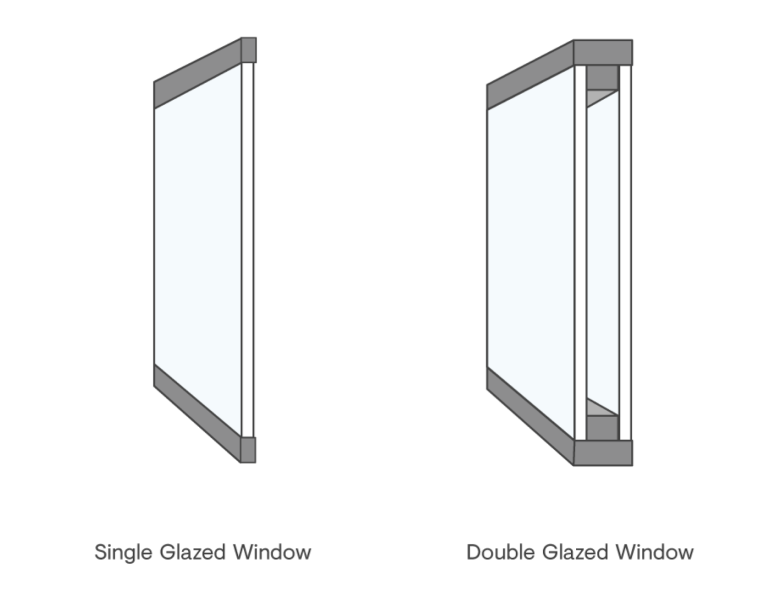
Locally made
Energy Efficiency
With recent updates to National Construction Code (NCC) regulations, double-glazed windows might be not only worth it, but necessary for your build. In fact, the NCC 2022 residential energy efficiency standards mean all new homes must have a minimum 7-star rating, so technologies like double glazing might be necessary to meet these standards.

Double-glazed windows and doors, also known as Insulated Glass Units (IGUs), feature two glass panes separated by an air gap filled with Argon gas. Argon, an inert gas, enhances insulation by trapping warm or cool air, helping to maintain a comfortable temperature year-round.
In cooler climates, like Victoria or Tasmania, double-glazed windows can prevent up to 55% of heat loss,* and when you couple double glazing with other technologies, the effect compounds.
In these same cool climates, double-glazed windows used with Low E glass can prevent up to 70% of heat loss.
Alongside energy savings, double glazing is popular over single glazed units for a range of reasons.
The air or gas between the two panes of your double-glazed unit can help absorb and dampen sound waves in the right configurations. In fact, Australian government studies have found that double glazing can reduce traffic noise by up to 57%./span>
Double glazing and other energy efficiency technologies help to reduce the amount of UV radiation that enters your home from the sun. While this helps to keep your home cool, it also reduces the severity of light on fixtures, carpets and furniture – helping protect them from long-term sun damage.
The degrading effects of temperature fluctuations on glass strength are reduced by the double-pane construction, while the impact of excessive humidity in northern climates is also reduced thanks to less moisture accumulating around seals. This makes your double-glazed windows more durable but also improves the air quality in your home by protecting your windows and/or doors from a buildup of mould.
It’s important to remember that changes to Australian building regulations mean that if you’re building a new home or building, it must adhere to a 7-star rating. These regulations are provided by the Nationwide House Energy Rating Scheme (NatHERS), which is administered by the Australian Government on behalf of all Australian states and territories.
There are two ratings under the NatHERS: the star rating system and the Whole-of-Home rating. The new NCC 2022 residential energy efficiency standards mean all new homes must have a minimum 7-star rating and a Whole-of-Home rating of 60 or higher.
You can find more information and view the National Construction Code here.
* The performance figures shown are based on heat gain through glass only. Data has been calculated using NFRC 100 – 2001 environmental conditions and Window 5.2 software from the Lawrence Berkeley National Laboratory (2006). Savings are in comparison to using 3 mm clear glass and may vary depending on actual operating conditions. Source AGWA.